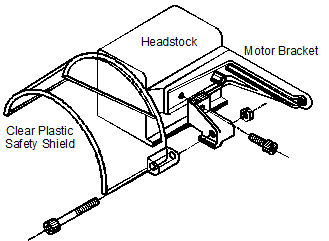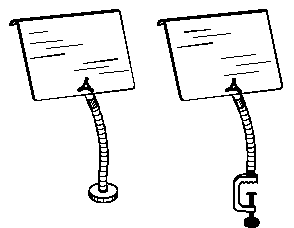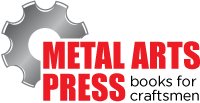- Acknowledgements
- Introduction
- Chapter 1: Measurement Tools, Layout & Job Planning
- Chapter 2: Basic Hand Tools
- Chapter 3: Filing & Sawing
- Chapter 4: Grinding, Reaming, Broaching & Lapping
- Chapter 5: Drills & Drilling Operations
- Chapter 6: Threads & Threading
- Chapter 7: Turning Operations
- Chapter 8: Milling Operations
- Chapter 9: Fastening Methods
- Chapter 10: Why Steel Hardens
- Chapter 11: Safety & Good Shop Practices
- Chapter 12: Other Shop Know-how
- Appendix I: Sharpening Steel Lathe Tools
- Appendix II: Surface Speed Table & Cutting Tool Selector Chart
- Appendix III: Decimal Equivalents of Fractional, Letter & Metric Drills
- Glossary
- Index
Chapter 11
Safety & Good Shop Practices
The work of the individual still remains the spark that moves mankind ahead even more than teamwork.
—Igor Sikorsky
Introduction
Machine shops contain many potential hazards, but with proper training, knowledge, common sense and caution, you can avoid these dangers. You must remember that human flesh is no match for machines powered by several horsepower and designed to rapidly remove large volumes of metal. These machines take no prisoners and rarely offer second chances. In addition to machine hazards, there are chemical, electrical, fire, and environmental hazards. Your best chance of avoiding injury comes when you:
- Understand how tools and machines work before attempting to use them.
- Know and follow basic shop safety rules.
- Learn the precautions necessary for safely handling hazardous materials by studying their MSDSs.
- Plan ahead and anticipate what is likely to happen next.
- Take your time and do not rush your work.
The material in this chapter cannot cover every potential hazard and circumstance, but it will get you started in the right direction. Additional safety precautions associated with specific machines appear in relevant chapters.
What are the principal hazards in a machine shop?
Personal Safety Practices
What are the essential personal steps you must take for machine shop safety?

Figure 11–1. Clear plastic safety shield over Sherline lathe spindle shown from the back of the machine.

Figure 11–2. Clear plastic chip and splashguards for milling machines.
- Contact with cutting tools, particularly rotating cutters and saw blades.
- Pinches, cuts, and punctures from hand and power tools.
- Capture of loose clothing, hair, jewelry or rags by rotating tools or machinery, which draws in the victim.
- Eye injury inflicted by flying metal chips, sparks, compressed-air-driven debris, compressed gases or splashing liquids.
- Eye injury from exposure to ultraviolet or infrared radiation from welding, torch, or laser operations.
- Hearing damage from prolonged exposure to loud noises.
- Burns from contact with hot cutting tools, work, torches, soldering irons, furnaces, ovens, and tempering baths.
- Respiratory damage from particulates and mists from machine shop cutting fluids, grinding dusts, toxic metals like beryllium and cadmium, welding smoke, and spray painting operations.
- Chemical vapors from paints, solvents, adhesives, fluxes, fuels, and chemicals.
- Injury from falling and tipping objects.
- Trips and falls.
- Electrical shock and secondary injuries resulting from being thrown by involuntary muscle contraction from the shock.
- Injury from lifting heavy loads.
- Accidental ingestion of non-food materials.
Personal Safety Practices
What are the essential personal steps you must take for machine shop safety?
- In the shop, always wear safety glasses with side shields.
- Add additional eye and face protection by using a full-face shield or over-glasses goggles when grinding, chipping, handling chemicals, blowing out chips with compressed air, or using a rotary wire brush.
- Dress properly for the shop:
- Remove ties.
- Put up long hair in a hairnet or a baseball cap so it will not become caught in machinery. Tie up long beards because they too can be caught in machinery.
- When working with machine tools, wear short sleeves or roll up long sleeves and fasten securely; do not wear loose clothing since it may be caught in rotating machinery and draw you into it.
- Never wear open-toed shoes or sneakers in the shop: wear steel-toed shoes if there is a possibility of objects falling on your feet.
- Use appropriate eye, face, hand, arm, and body protection when welding or brazing.
- Continue to wear safety glasses under welding helmets and full-face shields; they offer protection from shattered face shields and stray sparks.
- Remove all jewelry including rings, watches, bracelets, dangling earrings, bolo ties, and necklaces.
- Use clear plastic chip and splash guards on machine tools, Figures 11–1 and 11–2. Never reach over or near a rotating cutter.
- Use hearing protection when exposed to loud noses such as when hammering, sawing or grinding.
- Do not operate machinery when fatigued, taking drugs of any kind or using alcohol.
- Wear dust and vapor protection when these hazards are present. Avoid horseplay in the shop; it is extremely dangerous.
- Never have more than one person operating a machine.
- Know the location of fire/emergency exits, first-aid kits, emergency eyewash stations, fire extinguishers and fire alarm stations.
- Locate the nearest phone to call for fire or rescue help and have emergency phone numbers posted by the phone.

